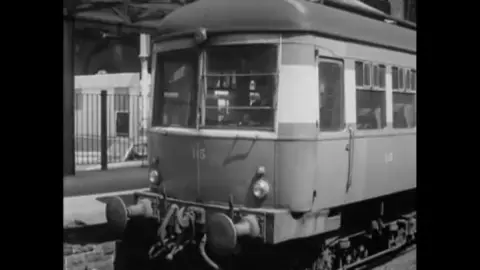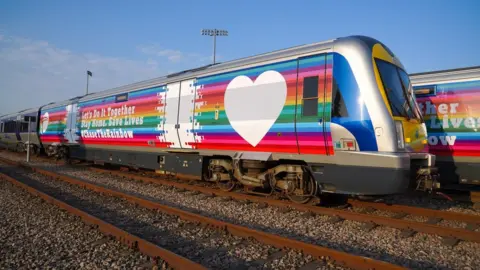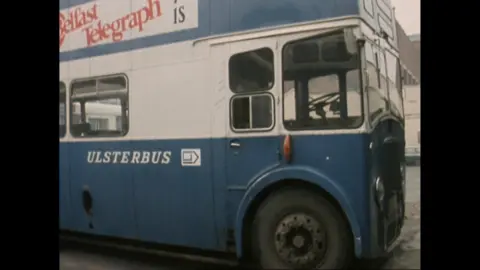Translink sets zero-emissions goals for next 25 years
 Translink
TranslinkTranslink is 25 years old and is promising to provide more environmentally-friendly buses and trains in the next quarter of a century.
Chief executive Chris Conway also said he believes that with more people working from home, public transport use will increase.
The company was formed in April 1996.
It brought together Ulsterbus, Citybus and Northern Ireland Railways.
Since then, the transport fleet and a number of stations been transformed.
Mr Conway said: "When we look back over the last 25 years, we can see massive changes. The comfort, Wi-Fi, USB charging points that 25 years ago you would never even have thought about.
"It was typically plastic seats that people sat on back then".
The Covid-19 pandemic has hit Translink hard, with passenger numbers dropping dramatically after people were told to make only essential journeys in spring last year.
 Translink
TranslinkThe company estimates that current usage is at about 30% of normal levels.
The pandemic has prompted some firms to rethink office working, which could mean a long-term reduction in commuters using public transport.

Translink timeline
- 1996 Formation of Translink
- 1997 Belfast-Dublin Enterprise service launched
- 1999 Timetables go digital
- 2000 Central Station in Belfast upgraded
- 2001 Opening of new Bangor bus & rail centre
- 2005 Metro replaces Citybus in Belfast
- 2009 New Newry train station opens
- 2010 Translink goes on social media
- 2018 Glider rapid transit service begins
- 2019 Refurbishment of Portrush station for The Open
- 2020 First hydrogen-powered buses enter service

So what impact could this have on Translink?
"I actually think it could have a real benefit," says Mr Conway.
"I think if people have more flexible working, it will help us to manage our costs at peak times.
"I think if people are working more flexibly, they perhaps won't need that second car in the driveway, and so when they do need to travel they can use public transport."
 Translink
TranslinkTranslink has a fleet of 1,400 buses, coaches and train carriages which, between them, travel 44 million miles each year.
Mr Conway said: "Our target is within 25 years to have all of our bus fleet zero-emission, so that will be a mixture of electric and hydrogen.
"We also plan to have our railway infrastructure and our rail fleet either electric or hydrogen as well in that time.
"We've already started a feasibility study on that."
Asked about Translink's finances, he said: "The budgets are only being sorted out now so we'll have to wait and see how that works out for this year."
 TRanslink
TRanslinkOne of the most recent developments by Translink was the Glider rapid transit bus service linking east and west Belfast.
Plans for the Glider service to be extended to the north and south of the city are being developed but the routes have not been agreed, and funding has yet to be finalised.
